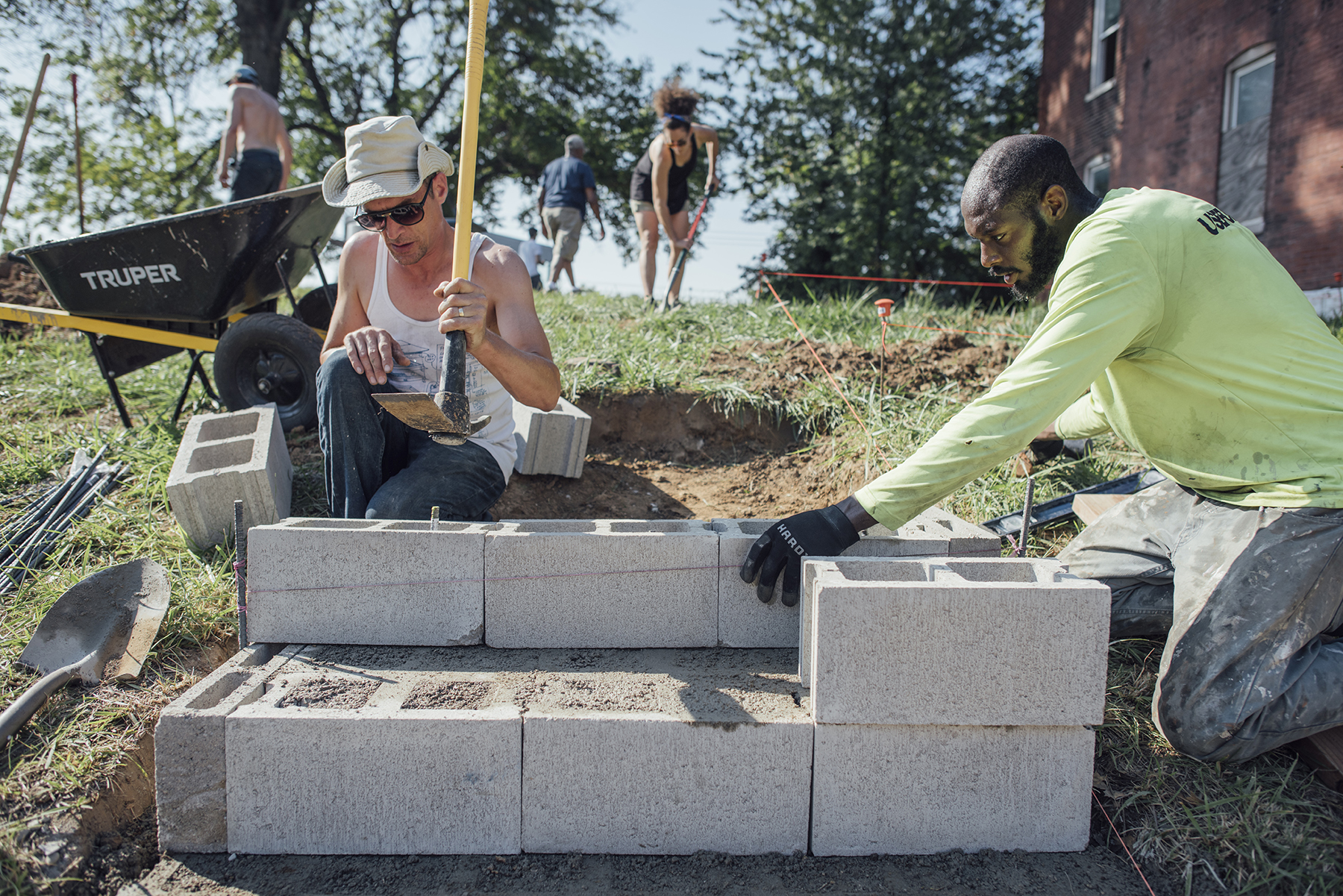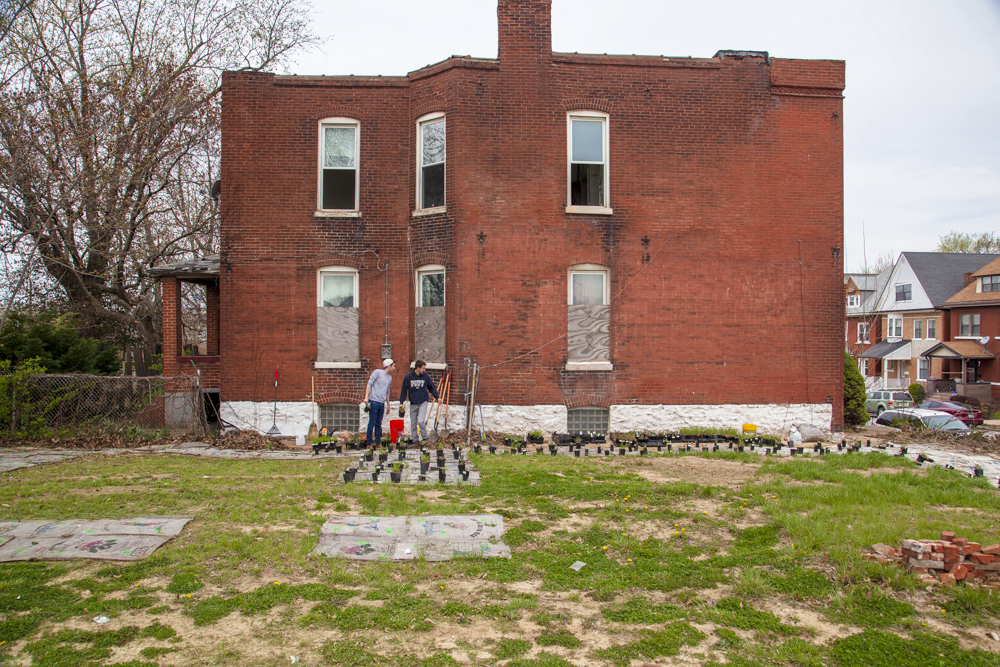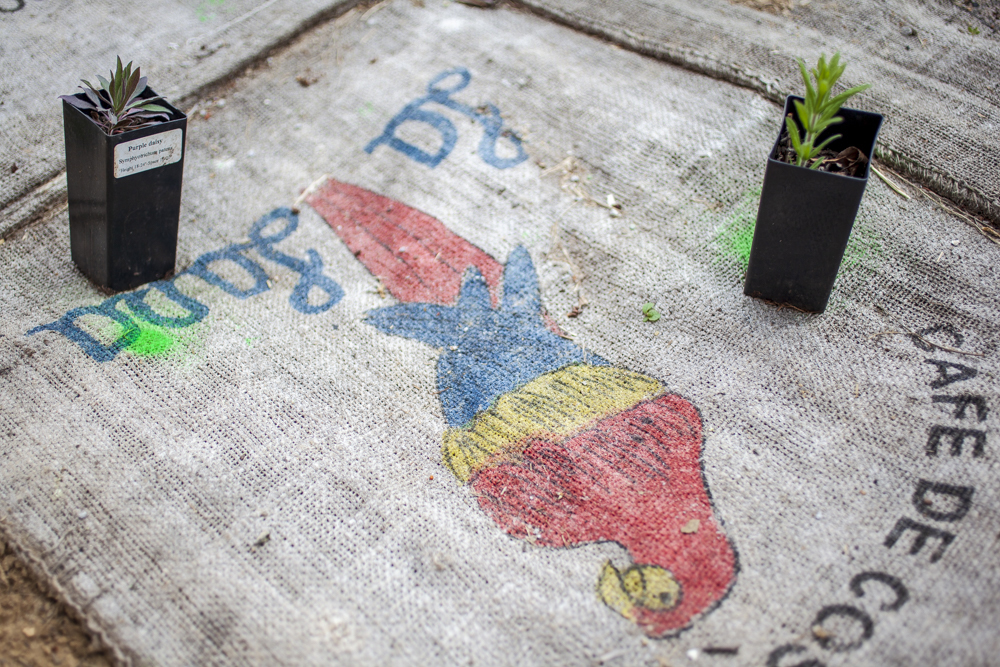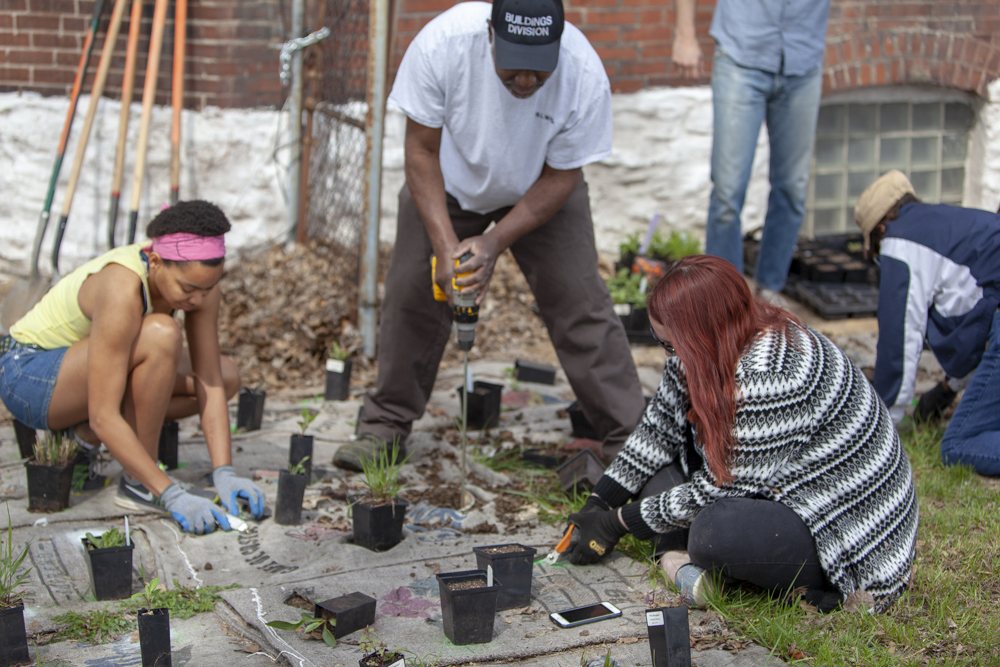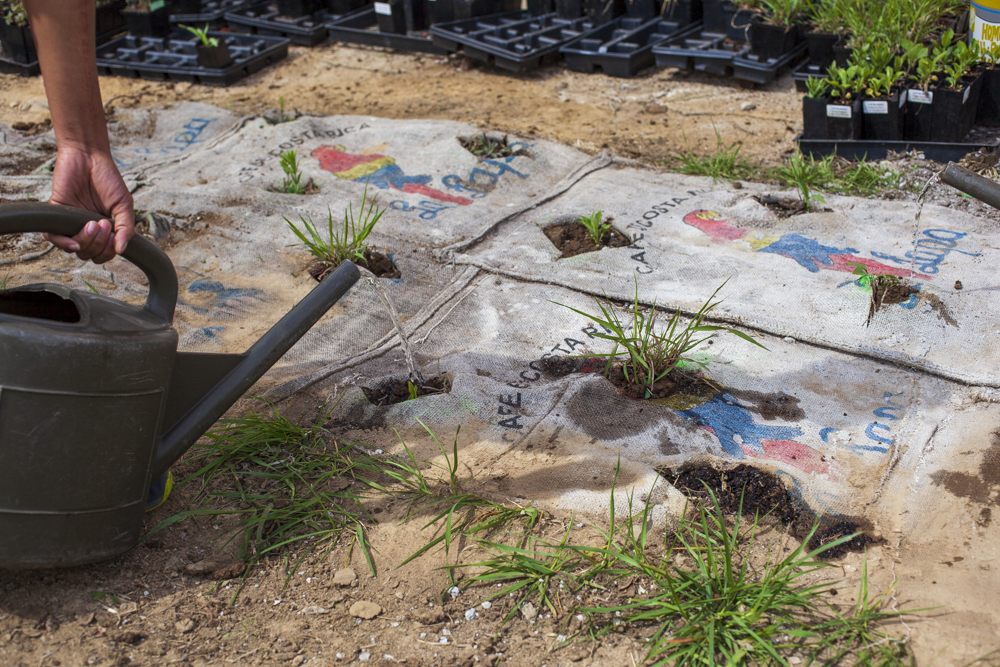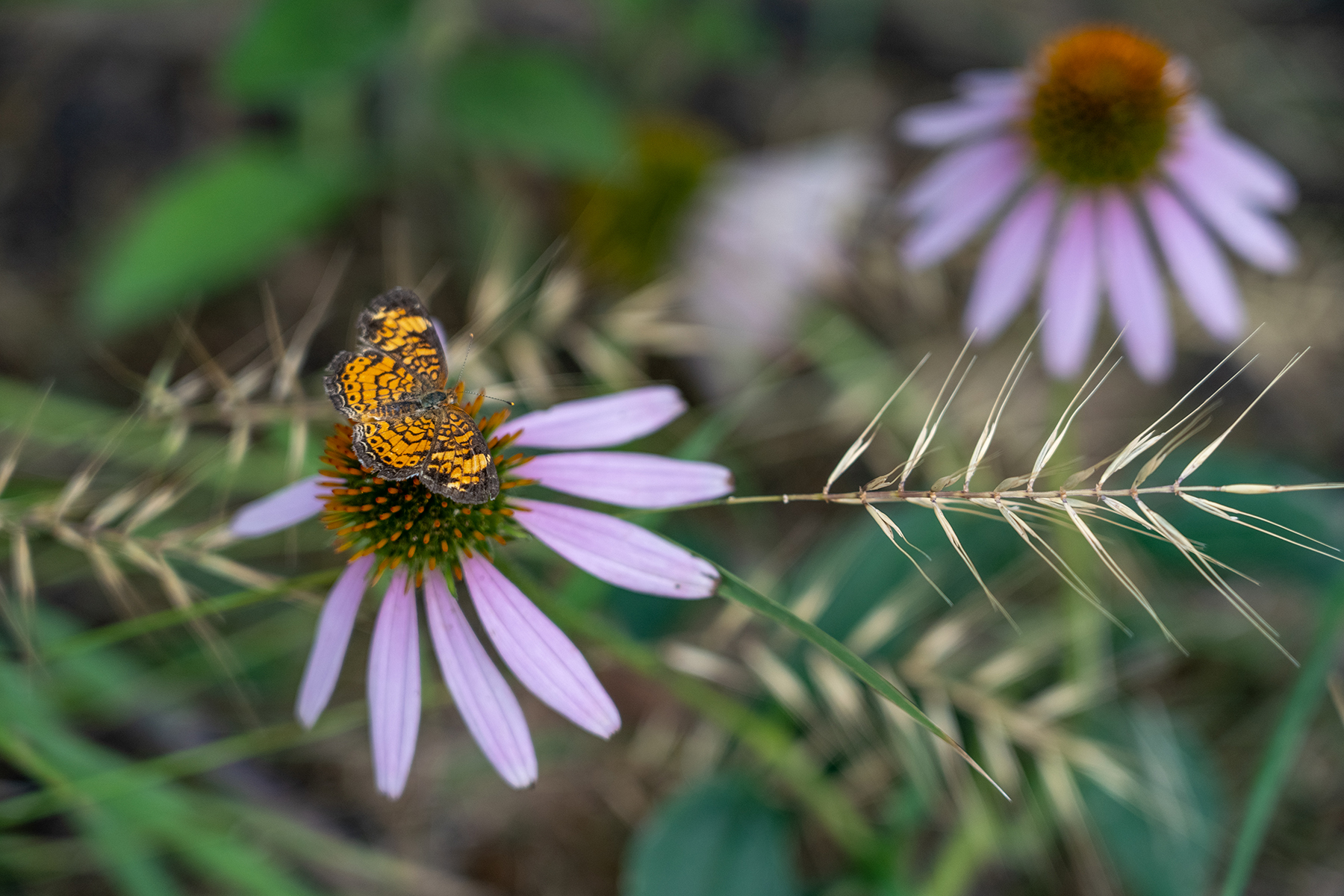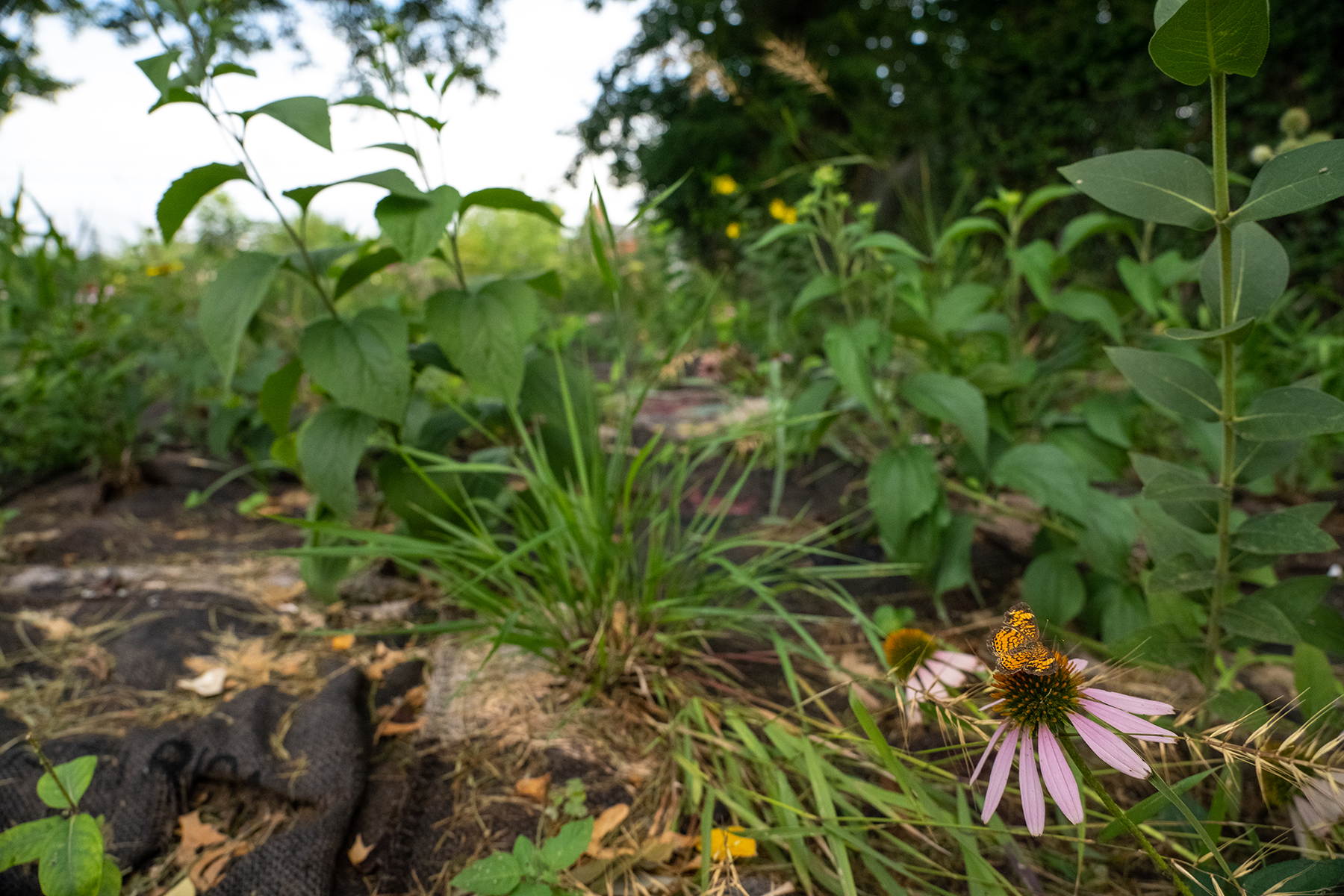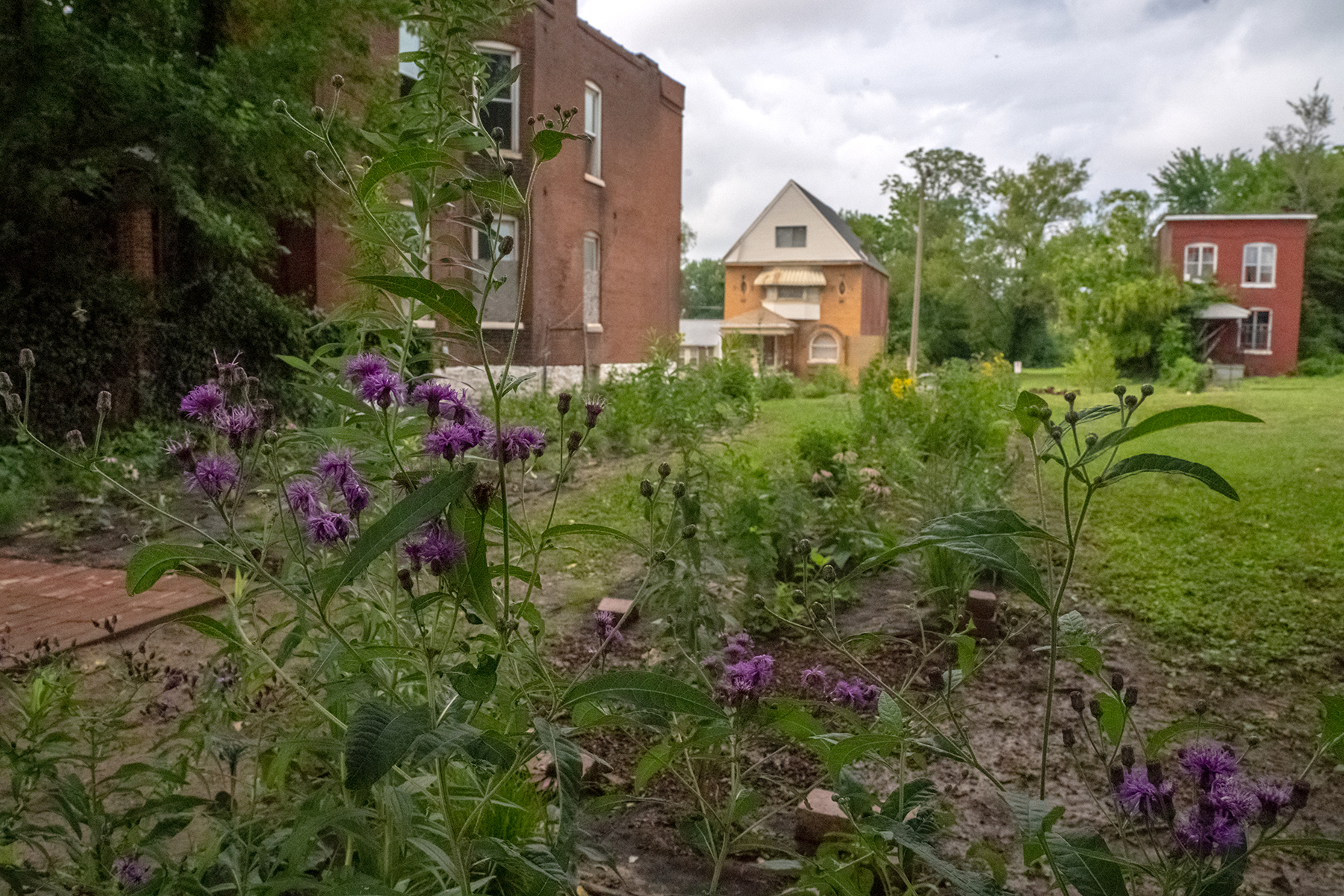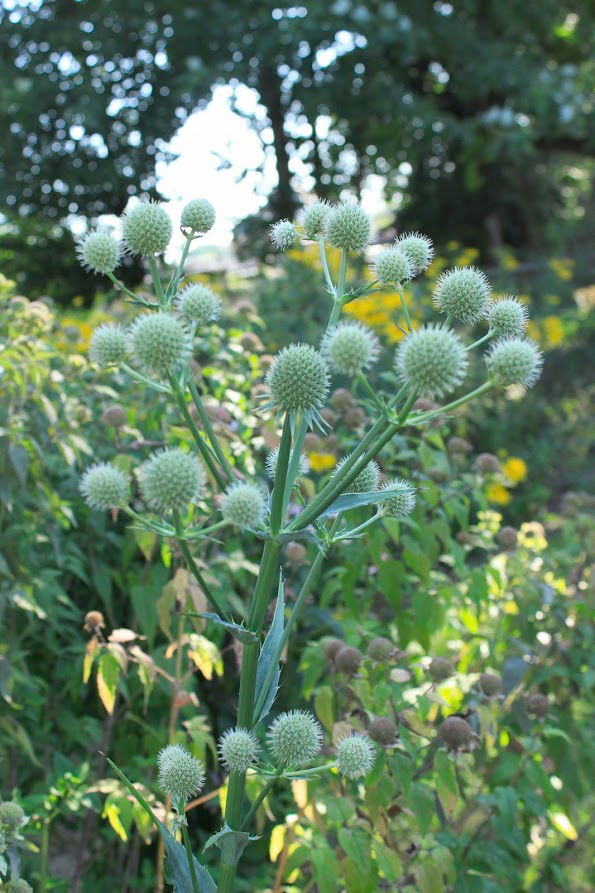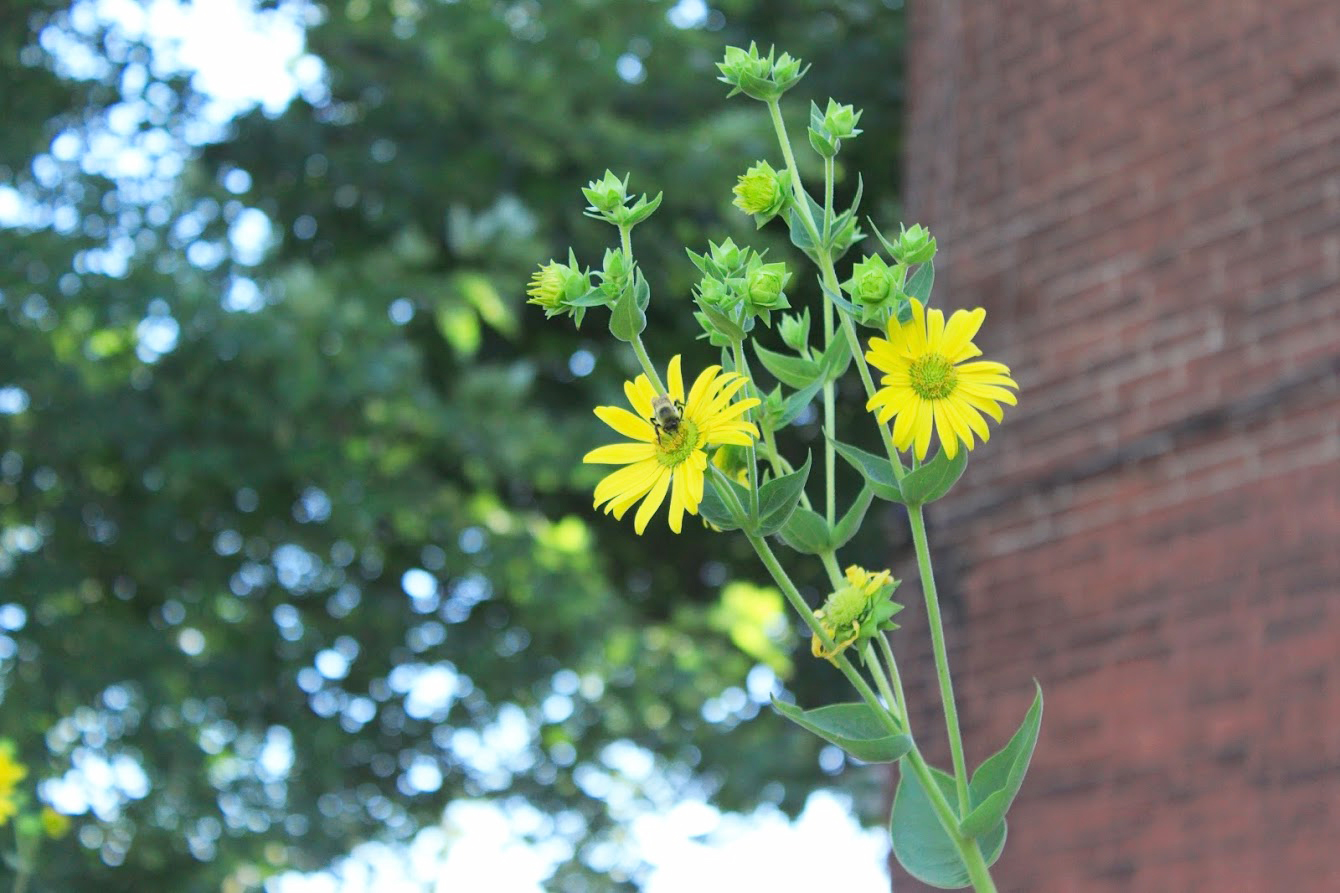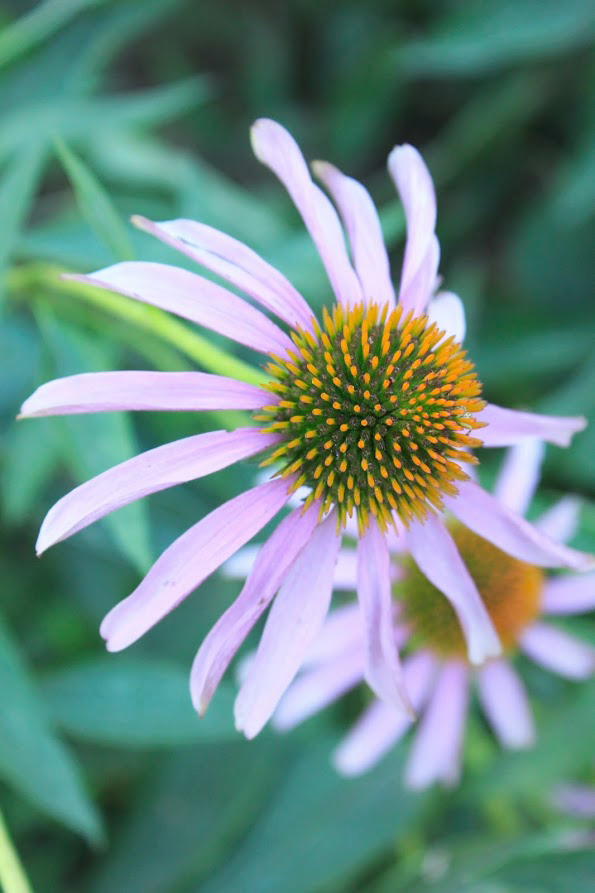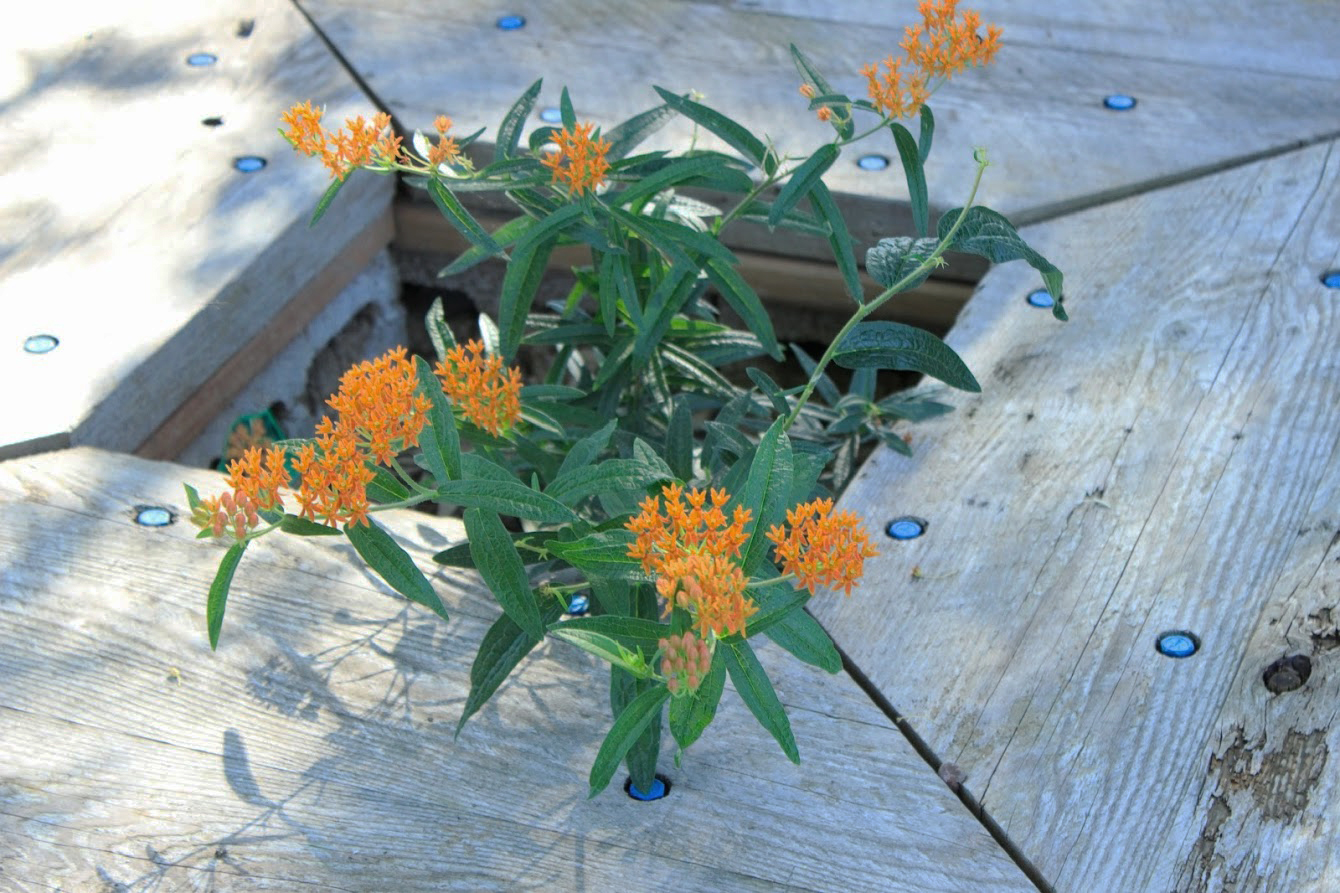A Preadaptation Garden
a.k.a. Enright Community Butterfly Garden
2017–18
Enright neighbors and Pulitzer Arts Foundation invited me to consult on the design and transformation of a recently vacant lot.
The neighbors and I met, sketched, and discussed possibilities for the site, coming up with 5 ideas to take to the block for a vote. The butterfly garden came out on top, but there was a desire to reuse the bricks from the building demolished and exhibited at Pulitzer in the Raumlabor exhibition in 2016.
I understood the butterfly garden as such:
Ink, transfer, brick dust on paper.
'Butterfly garden' evokes the human traditions of the garden, as well as cycles of maintenance and appreciation. Of course we must also take an interest in what the butterflies need and desire. The butterfly garden is where both humans and butterflies want to be.
Two neighbors, Richard Butler and Elvis Hopson, have been mowing the lot and 3 adjacent lots for years, though the city's Land Reutilization Authority (LRA) owns the properties. We discussed the neighbors' commitments to transforming the lot, as well as the desire for reduction in mowing and the possibility of something lower maintenance. Elvis and Butler agreed to long-term stewardship of the community butterfly garden.
The design takes the bricks left for reuse from the demolished house and distributes them in a field of wildflowers. The brick elements cut into the field, inviting neighbors into the lot to stay and interact with butterflies and other wildlife. The mowing is reduced to a mowed room and a path.
Through conversation with St. Louis-based ecologist Doug Ladd, I saw an opportunity in the garden to test which native plants might be pre-adapted for the degraded vacant lot conditions. The urban landscape is not what it used to be, and so there are questions about restoration ecology and the fitness of native plants for these transformed conditions. Still, the precolonial ecosystem offered many landscape types and even more species adapted for a range of conditions. Vacant lots, ubiquitous in the City of St. Louis, might support much more biodiversity than they do in their current state. Many vacant lots have conditions akin to the upland oak savanna, and so our plant selections came from this landscape type.
After taking stock of what was growing on the site, I selected a free material—burlap coffee sacks—for shading out the mat of common invasive species onsite and giving our native, butterfly-attracting wildflowers a chance to acclimate.
In the fall of 2017, we stationed the elements of the garden and installed the burlap in a grid, representing the areas where the wildflowers would eventually go. For the duration of the fall and winter, the surface of the site was covered with imagery from various parts of the world where coffee is grown—flowers, birds, and human faces printed on the ground.
On a volunteer day in September, Raumlabor returned from Berlin with their Space Buster and collaborated with neighbors and local renaissance man Bryan Carpenter to begin building the garden. Pulitzer Arts Foundation funded the event and the the first brick element—the access stair. Sophie Lipman organized the affair.
Drone photo by Raumlabor. Photographs 2–4 by Kevin McElvaney. Pictured in the second photo are Sophie Lipman (background) and Violet Jackson, foreground.
In the spring of 2018 neighbors and friends of the garden gathered again, but this time to plant. St. Louis Metropolitan Sewer District funded the planting through the Project Clear program. A CityStudioSTL grant from the Office of Socially Engaged Practice at the Sam Fox School of Design & Visual Arts allowed me to bring on Eric Kobal to help design and implement the matrix planting of around 1000 plants.
Eric and I prepared the site for another volunteer day by marking three places for planting on each burlap, achieving the desired spread of the plants in the design. The marking also served to station the plants for the assembly line of volunteer work.
Burlap coffee sacks, landscape staples, utility marking paint.
Photos above by Chris Bowman. Pictured in the first photo are Jimmy Hibsch and Eric Kobal; in the third Gabriel Davis-Craven, Richard Butler, and Briana Coleman; and in the fourth Sophie Lipman (hand).
The plants have quickly begun to establish in the garden, replacing the fading images on the decomposing burlap. The brick elements are under construction.
Burlap coffee sack, landscape staples, Echinacea purpurea, Silphium integrifolium, Pycnanthemum tenuifolium, excavated brick shard.
A third grant, from the Gephardt Institute for Civic and Community Engagement at Washington University in St. Louis has supported further construction of the brick elements in the garden.
Above photos by Nathanael Stanek, Summer 2018.
Spring 2019
Ylan Vo (foreground) and Andrea Godshalk (background), friends of the butterfly garden sitting in “the introvert garden,” after planting the butterfly milkweed (Aesclepias tuberosa) in the middle of the seat made of demolished building material.
Above photos by Rebekah Thackston, Summer 2019.
I installed a sign in the summer of 2020, though social distancing had slowed down work on the garden. Bryan Carpenter of Useful Peeps, was the primary mason and carpenter throughout the project. I made a graphic featuring his hand with a brick and a butterfly milkweed (Asclepias tuberosa) sprouting through, and a monarch landing on the monarch. I hope this kind of sign reinforces associations people have with the history of the site, as well as inviting new associations and relationships to emerge here.






